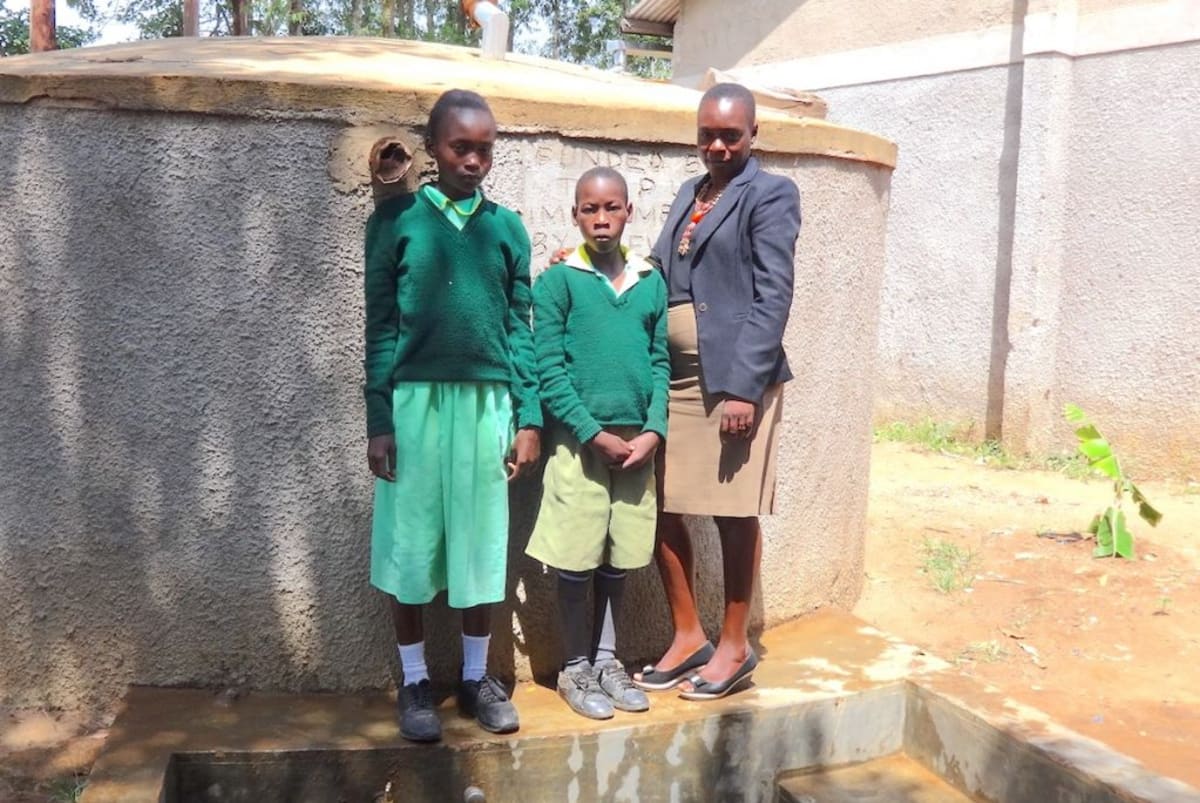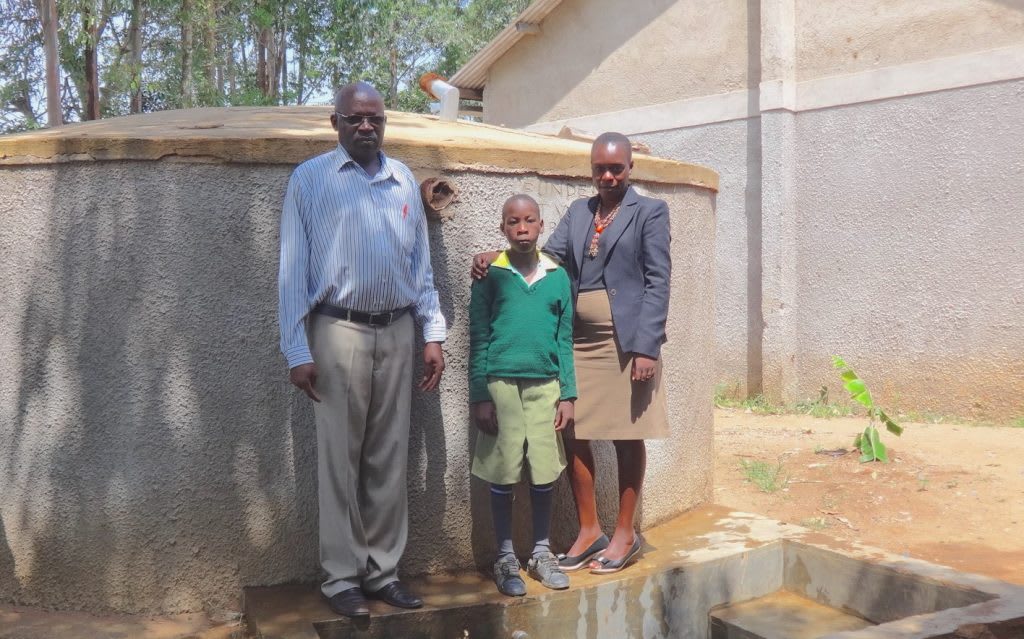Eburenga Primary School has no water source on school grounds. Students carry water from home in three or five-liter jerrycans. Once water is delivered to the school by the students, it is consolidated in larger 100-liter containers. Since all of this water is from different sources, many of which are unsafe, students and staff suffer. Cases of diarrhea, stomachaches, and typhoid are the norm. As if school isn't enough challenge for a child without waterborne disease!
When students use up the three to five liters they brought, they are sent out to search for more water.
The school also lacks enough latrines; there are seven useable latrines for 729 students! (Editor's Note: While this many people may have access on any given day, realistically a single water source can only support a population of 350-500 people. This community would be a good candidate for a second project in the future so adequate water is available. To learn more, click here.)
This school is now funded to receive a rainwater catchment tank, new latrines, and hand-washing stations. Students and staff will also have the opportunity to attend hygiene and sanitation training to learn about ways they can improve their health. Imagine the impact!
Welcome to the School
Eburenga Primary School was established by Friends Church in 1983 with the motto "Move an Extra Mile." It is located in Eburenga Village, Esumeiyia, Butsotso, Shikomari, Navakholo, Kakamega Country of Kenya. When the school first opened, it had only 35 students! Now, it has an enrollment of 776 and employs 18 teachers.
A normal day at Eburenga Primary School begins at six in the morning. The water that students carry from home is immediately put to use for cleaning the school compound and classrooms. After cleaning, students gather outside for morning exercises until announcements and flag-raising at 8AM. After that, it's time for normal classes. These last until 10AM, when students have a short break to get a drink or use the latrines. Another class goes until lunch, when students break for one hour to either have lunch on school grounds or return home if it is nearby. Afternoon class gets out at 3:45PM. Students normally play games in the field until it's time to return home and prepare for the next day.
Water Situation
Beyond the water students bring, the school also relies on a hand-dug well which dries up for part of the year. Even when the pump yields water, the long wait in line cuts into class time. There is a spring about one kilometer away from school. Sometimes, students have no other option but to abandon class to get the water they need.
The school has some 100-liter plastic barrels that they use for water storage. Water that students fetch is poured into these containers. After drinking this water, students complain of diarrhea and stomachaches, and often miss school because of typhoid.
Sanitation Situation
There used to be 16 latrines on school grounds. Now, only seven are usable. Some of the others are full, missing doors, or infested with termites! This is not enough for the large student population, and long lines form during class breaks. Due to the water shortage, none of the latrines can be cleaned on a regular basis.
There are two hand-washing stations, and a compost pit where students throw their garbage. When garbage piles too high, it is burned to make room for more.
Students and teachers were very excited to hear about a water, sanitation and hygiene project at their school. They have agreed to meet for training about new ways to improve health both at school and home.
Headmaster Henry Naman gave us a tour of Eburenga Primary School. He shared about their struggles of not having enough clean water or sanitation facilities. He also told us that "the school has been issued an Order for Closure by the Publich Health Department. Any kind of assistance to avert the order will be highly appreciated!"
Plans: Hygiene and Sanitation Training and Hand-Washing Stations
Training will be held for two days. The facilitator will use PHAST (participatory hygiene and sanitation transformation), ABCD (asset-based community development), CTC (child to child), lectures, group discussions, and handouts to teach health topics and ways to promote good practices within the school. The CTC method will prepare students to lead other students into healthy habits, as well as kickstart a CTC club for the school. This CTC club will oversee the new facilities, such as hand-washing stations, and make sure they are kept clean and in working condition. The two hand-washing stations will be delivered to the school, and the club will fill them with water on a daily basis and make sure there is always a cleaning agent such as soap or ash.
Plans: Rainwater Catchment Tank
A 30,000-liter rainwater catchment tank will be constructed on school grounds. Teachers, students, and parents will gather the materials needed for this project, including sand, ballast, bricks, and hardcore. This contribution will fuel a sense of responsibility for the school and community to take care of their new facilities. Once materials are mobilized, the WEWASAFO team will arrive to lead the construction effort.
Plans: VIP Latrines
Two triple-door latrines will be constructed, providing three new latrines for each gender. Latrine materials will be mobilized the same way as the tank, ensuring the school feels these facilities are truly theirs.
School administration and parents are positive that with these new facilities and training, their students’ academic performance will improve. And most importantly, when this project is complete, there will no longer be a need to close the school. Students will be healthy and empowered to focus on what’s important!
Thank You for unlocking potential at Eburenga Primary School!

 Rainwater Catchment
Rainwater Catchment
 Rehabilitation Project
Rehabilitation Project























